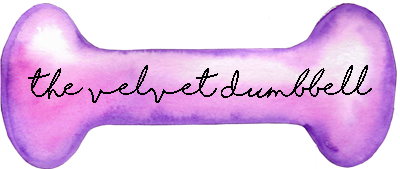Learning to See
I remember when I learned to see differently.
The summer after my freshman year in college, I stayed on campus to take an intensive art course. My home for those two weeks was the design lab where I received instruction all day and worked on two-dimensional art projects long into the night. Think of it as a summer camp for budding artists, but instead of roaming around the great outdoors, we spent sixteen hours a day in a fluorescent-lit design lab experimenting with different media and techniques.
The creative atmosphere of productivity came to resemble what reality television shows such as Project Runway would capture years later, although without the fierce competition. No prize was handed out, other than a good grade and coveted praise from the professor.
The class had a predictable cast of characters: the recluse who wore all black and kept to herself, only to look up from her work and answer when called upon, the flamboyant pupil who spent most of his day chatting and flitting around the room making others laugh, and the neurotic student who, no matter the assignment, worked nervously up until the final moments of the deadline, yet still needed more time.
Then there was Kim.
The quiet artist sat two tables to my right. I imagined her to be sensitive and perceptive. On the few occasions that I had heard her speak in a previous class, her low voice was calm and reserved. She reminded me of a cross between a prom queen and an ice queen - her beauty enough to make you stare, but then immediately look away out of intimidation. She rarely talked aloud in class, but from my perspective, her work spoke for itself.
While I gravitated towards drawing abstract images, Kim created in reality. Her specialty was in drawing and painting an exact likeness of that which was in front of her. Her rendering of light and shading was true perfection. Whatever Kim drew or painted mirrored what she was looking at, and no one preferred their work to be displayed next to hers, as the difference was as obvious as a stick drawing hanging next to a Rembrandt.
Midway through the course I became frustrated with my inadequate skill on a particular assignment. As was customary to periodically walk around the room when one was in need of a break, I couldn’t help but notice Kim’s artwork as I passed. Her artistic talent was extraordinary as what she was drawing exactly resembled the object set before her. It looked more like a photograph than a drawing. In fact, it looked better than a photo. I awkwardly stood beside her table.
While this isn’t Kim’s drawing, it looks identical to something she would have created.
“What is your secret?” I clumsily blurted out. “How are you so…good?” She gently put her colored pencil down, turned to me, and replied, “It’s all in the way that you look at the object.”
From that moment onwards, I was challenged to see things differently.
Over the course of the next hour Kim showed me how she approached looking at an object to draw. Dear reader, I shall not bore you with the details, but she explained how to let my eyes focus on the shapes the light creates on an object instead of on the object as a whole. Then I would draw and color according to what I saw in the space rather than what I thought the object should be. Over time, this one piece of advice changed the way I drew, painted, and created forever.
At first it became incredibly challenging to shift my way of looking at an object, as I had a difficult time distinguishing the shapes from the whole. However, with increased practice, it became easier for me to adopt this new way of looking at things, and I soon saw my artwork being transformed from flat and lifeless to rich and accurate. I certainly was no Rembrandt, but at least I was headed in the right direction.
Twenty-seven years later, Kim’s method for drawing an object has been so well practiced that it has become my default method. I no longer even know how to look at an object any other way.
In order to see more clearly, sometimes you must change the way you look at something.
To improve, I did not need to work harder nor be smarter. Better materials would not have helped my artistic rendering. What I needed was for someone to come alongside and show me how to look at things differently.
I reached out for help. And Kim showed me another way.
Where in your life do you need to be challenged to look at something differently? Where do you continually face mediocrity, confusion, or even frustration that leaves you knowing that the path you are on is not giving you the results that you desire? Perhaps you, like me as a frustrated college student wandering around the design lab, might not even know the right question to ask, but you have spotted someone who perhaps can help.
I kept the small drawing (pictured below) that Kim helped me work on as a reminder in case I ever forgot how to see differently. I might not have retained much from that two-week course, but I will never forget the lesson that Kim taught me. That day her words changed my life as an artist.
At different points in our life, we are all in need of a Kim to help show us the way. May you be on the lookout for your Kim, and when you do indeed find her, have the courage to reach out. Even if you don’t know the the right questions to ask.
“Oil of Olay” still life. May 1993



